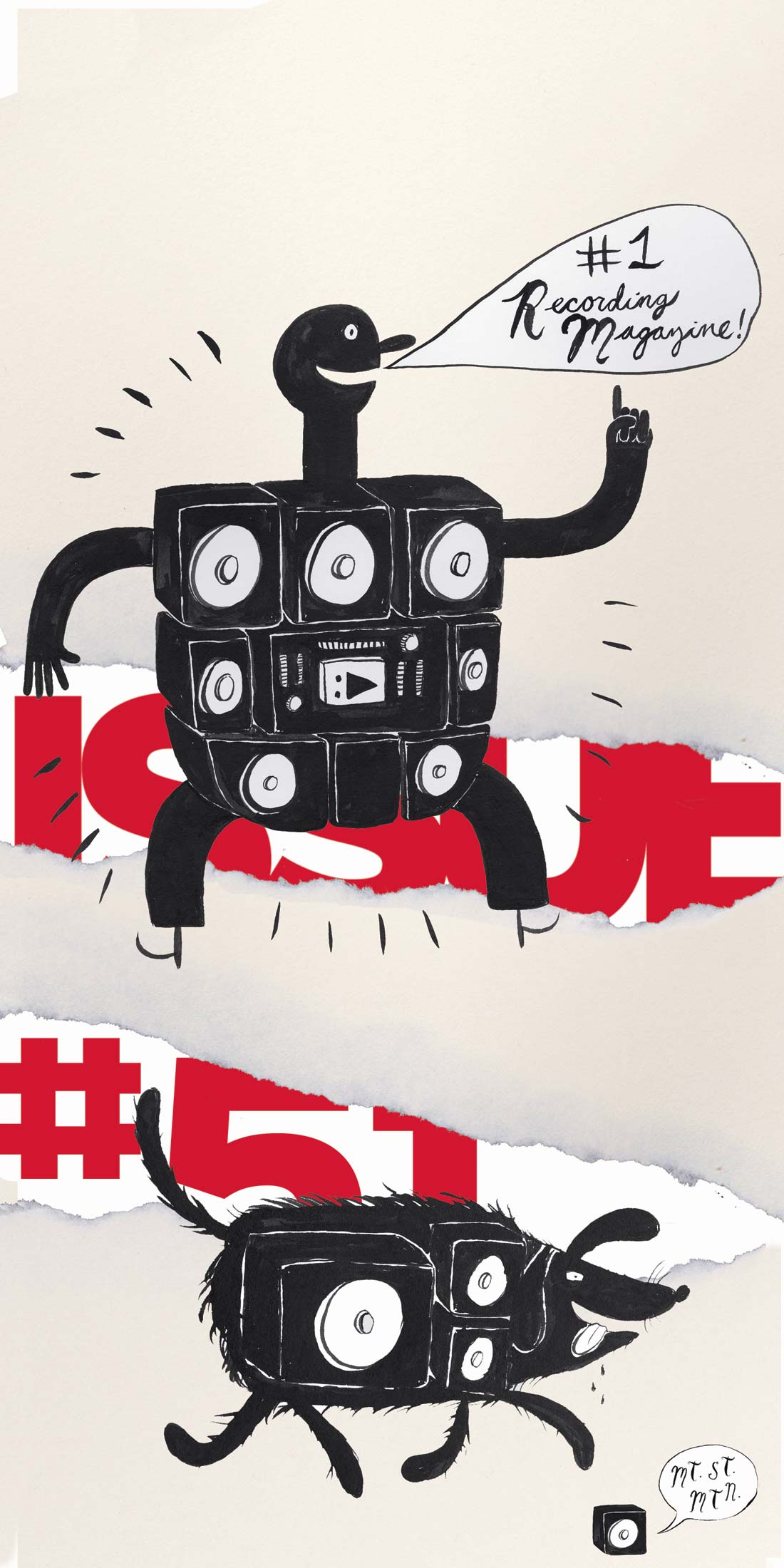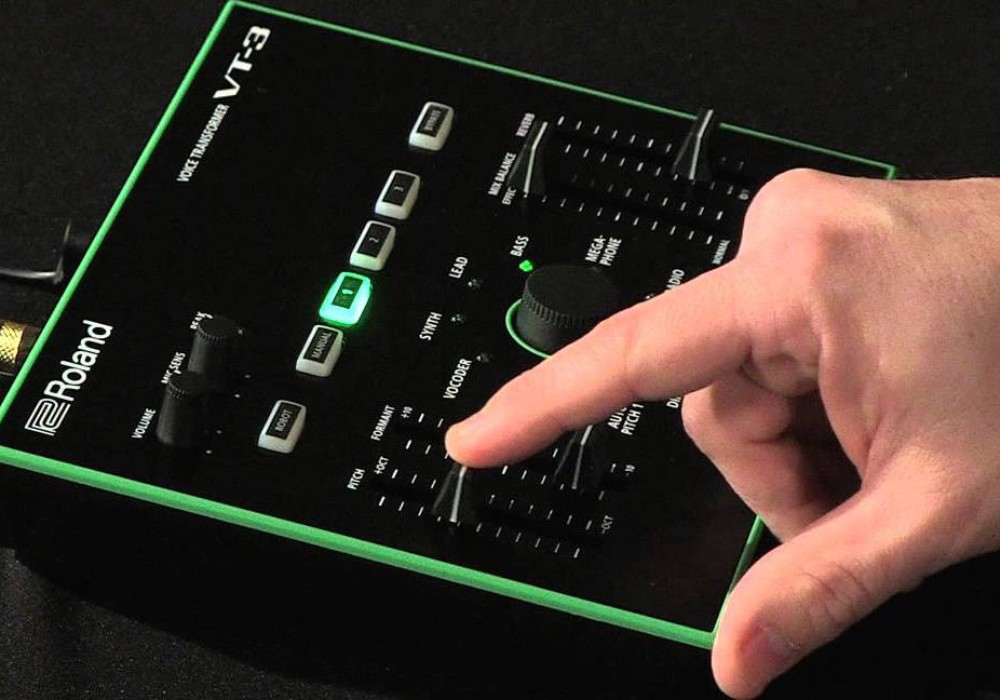Digidesign's original Mbox was alternately praised for its portability, affordability, and sound quality and dismissed by some as an overpriced USB dongle. The Mbox 2 is an updated, 24-bit, 48 kHz capable USB audio interface for Pro Tools LE users, and it adds a number of features to the original at virtually the same price.
Out of the box, the Mbox 2 is a shade larger and heftier (about 1 lb heavier) than it's predecessor, with a stylish, dark blue front panel that looks a bit more like a serious piece of hardware in contrast to the toy-like appearance of the original Mbox. The unusual looking handle doubles as a prop stand of sorts, raising the front panel up about an inch or so when the Mbox 2 is laid flat on a surface, ostensibly for better access to the smallish pots and buttons. The handle also steadies the Mbox 2 when it's placed vertically (like the original). Digidesign includes a second, solid panel that can replace the handle by means of a single hex screw (wrench included). I swapped the handle for the solid panel immediately, which slimmed the Mbox 2 down to a laptop-bag-friendly size. Note that its squared-off case is easier to get it into a bag than the original Mbox, despite the Mbox 2 being a bit larger overall. Unfortunately, it is not slim enough to fit into a 1U rackspace. The 1/4'' headphone jack on the front panel replaces the original's 1/8'' jack and is a welcome addition. Two other additions are a -20 dB pad for each input channel and a mono switch that sums the two inputs. (It would have been nice to have a mono sum for mix playback as well for checking stereo phase.) Just like the original, there's a mix control that allows one to adjust the ratio between source input and DAW playback for zero-latency monitoring when tracking overdubs-an indispensable feature. All of the pots and switches operate smoothly and are high quality. One minor design flaw is the shape of the knobs; they are "spined" in the center, which means you pinch to turn them. This is awkward for my big mitts, and I found my hands running into the neighboring controls whenever I'd make an adjustment. Plain, circular knobs (like the original Mbox's) are more usable.
Back panel features are well laid out and easy to access. New to the Mbox 2 are MIDI in and out ports. With the proliferation of software instruments, control surfaces and other useful MIDI devices, I see MIDI I/O as a must- have. With S/PDIF digital, there's four-in, two-out capability: two analog and two digital channels of input; two channels of output, with digital mirroring the analog. Each of the two analog inputs has a separate jack for mic (XLR), line (TRS), and instrument (1/4''). The analog jacks are directly across from their corresponding front-panel controls, so it's easy to cable the Mbox 2 when viewing it from the front. The analog inserts from the original Mbox are gone in this new design, but I didn't find myself missing them, as I tend to put everything I need into the signal path before going into the Mbox 2.
Installation of the included Pro Tools LE software was gravy (Mac and Windows versions are included), and the Mbox is nothing if not easy to use-just plug it in to the USB port, create a new session, and you're ready to record. Serial number authentication/registration is easy as well. The Mbox 2 supports multiprocessor computers, and one can control CPU allocation in the Playback Engine window.
How does it sound? Well, it sounds great. The new converters actually sound better than the original Mbox's. The new preamps, which are no longer Focusrite designed, are responsive and surprisingly gain-heavy-perfect for mobile recording, spontaneous sessions, podcasting, or serious tracking and overdubbing. And yes, it's a great big USB dongle too; having the Mbox 2 around allows engineers to take their edit-intensive Pro Tools sessions with them-on the plane, in the van, to the rainforest, whatever. Are the mic preamps as detailed and nuanced as API or Neve? No, of course not, but really, who cares at this price point? The preamps are more than suitable and flexible enough for 24-bit recording. Would 88.2 or 96 kHz capability be nice? Yes, but that's a feature that Digidesign apparently wants to reserve for the 002 crowd. Oh well. At least this version supports 32 tracks of simultaneous playback and comes with the Pro Tools Ignition Pack, which includes "lite" versions of Live, Reason, SampleTank, BFD, AmpliTube, T-RackS EQ, and Melodyne uno, as well as other goodies. This bundle adds value to an already great deal for an affordable interface and DAW. All in all, the Mbox 2 represents everything a beginner would want to dive headfirst into the world of Pro Tools-or an experienced PT user would need for portability.
($495 MSRP; www.digidesign.com)





_disp_horizontal_bw.jpg)